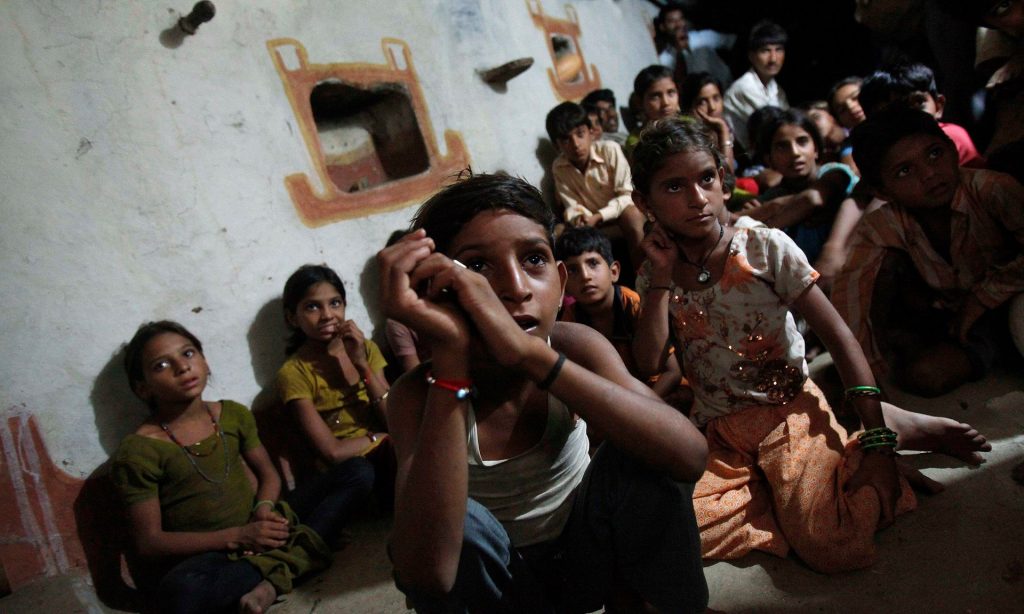
Photograph: Adnan Abidi/Reuters
At last month’s world humanitarian summit in Istanbul, leaders outlined a set of core responsibilities for humanity, and spoke of the need to reform development assistance. One proposal was to place greater emphasis on local ownership and control of projects.
The idea is simple: rather than providing ready-made solutions that might not be right for a particular country, development assistance should facilitate access to tools that enable people to come up with their own fixes.
In India, community groups set up in villages and slums to tackle specific problems are known as self-help groups. These groups, typically predominantly female, are often established to access microfinance loans, but they can also lead members towards the possibilities offered by new technologies.
In Raipur, a city in central India, groups are partnering with businesses and NGOs to produce useful, relevant products using open-source technologies, thereby offering members a chance to create sustainable livelihoods.
These technologies – which include self-replicating 3D printers and “instructables” for making your own solar panels – are generally cheap to access. They are shared and co-developed by collectives, usually online.
After exploring opportunities, needs and interests, participants in the Eco-Green Livelihoods project decided to produce solar power systems capable of lighting homes in rural villages that remain off-grid. Working together, local technicians and NGO staff used open-source designs shared online to produce the solar sets.
Unlike solar-powered products manufactured in large facilities using designs that are the exclusive intellectual property of large corporations, this kind of project trains marginalised communities to build low-cost products that will answer basic needs in a region crippled by electricity shortages.
All the materials required to make the sets – solar panels, batteries and the basic components of electronic circuits – are available in nearby markets. Because the design information is freely available, and the materials are easily accessible, a moderately skilled technician can train people from the slums to make a robust product capable of solving their development problems.
Ram Kumar, a technician, trains a mainly female group to make the solar power systems.
“These women, who have little education and previously could only get a few hours of work a week cleaning other people’s homes, have now learned to make this fairly technical product and are earning a much better living,” Kumar says.
The £20 device manufactured and marketed by the group provides a small amount of uninterrupted, free, off-grid electricity. The money is not enough to run big screen TVs or air conditioners, but it is ample for two or three light bulbs, a charging point for a family’s mobile phone, and a few other essentials. Collectively, these things make a big difference to people’s lives.
The cost is high for most people, but sometimes it is subsidised, or people can pay in instalments.
This is exactly what is needed in the hundreds of rural villages across India where people have no access to the grid. Group members install the solar lighting systems in people’s homes, collect the payments in monthly instalments, and take responsibility for regular maintenance.
Because of their personal involvement, villagers see their new access to electricity as a collective achievement, and participants enjoy a small collective savings account, funded by sales of their products. They can use this money to invest in other projects in the village.
Sometimes, these local initiatives can even catalyse action from the state.
A village in Mahasamund district, Chhattisgarh, was the first to achieve complete solar lighting through the Eco-Green project. After years of government inaction, the village was connected to the grid within a month of installing the solar power systems. But some villagers were unimpressed by this tardy official intervention.
Shruti, the first lady to install a solar-powered light, told me how the project had changed her life.
“This [solar] light is free, so why would we switch on the other one? They have installed the electric line because now they see we have power.”
This process of building livelihoods and meeting development needs is one potential solution to the problem of off-grid or “mini-grid” electrification. And while it may not completely eradicate energy inequality, achieving access to power through collective action is a good first step.
Using a small technological innovation – like open-source solar – individuals can take control, and their actions can strengthen the impact of development assistance and multiply the transformative potential of technologies.
- Eric Kasper is a research fellow at IDS, University of Sussex

